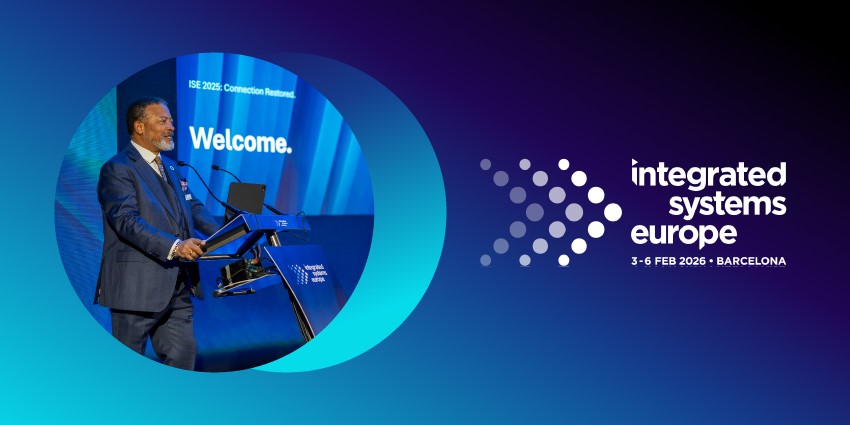With just over a year until the Public Switched Telephone Network (PSTN) switch-off in January 2027, the clock is ticking for UK businesses to migrate their systems.
Despite the deadline being extended from 2025 to 2027, many businesses are still inadequately prepared for the migration.
Before the extension, data from UK telco Zen Internet found that only 18% of small businesses and 26% of large businesses had a post-PSTN solution fully in place.
Equally as concerning as this inertia is the lack of understanding about what the PSTN switch-off will affect. As Ryan Zoehner, CEO at Algo, explains, “organizations really need to understand that there’s this mistaken belief that the switch-off only impacts traditional phones, desk lines, landlines, and voice services.”
This misconception creates blind spots for companies in their migration planning, leaving essential systems unaccounted for until it’s too late.
Thus, understanding the full scope of how the PSTN switch-off will affect an organization’s technology ecosystem is the foundation for successfully meeting the deadline with all your communication infrastructure operational.
The Hidden Scope: Beyond Voice Communications
The PSTN is the traditional copper-wire telephone system that has formed the backbone of global communications.
However, what was originally designed to carry voice calls has since been adapted to support a wide range of services and devices.
As a result, PSTN is enabling far more business infrastructure than most organizations realize.
“This is a fundamental piece of technology bedrock that underpins far more than just voice,” Zoehner explains.
For businesses unaware of this fact, it means that when the switch occurs, large swathes of their equipment will simply no longer work.
This becomes especially problematic considering some of these systems are business-critical. As Zoehner says, “Everything from traditional phone systems to security and fire alarms, door entry, and even payment terminals can be impacted.”
Therefore, failing to account for everything that needs updating could render businesses inoperable and unsecure come the switch-off.
Understanding this, some businesses may want to make the right decision to take stock of what they have that runs on PSTN infrastructure.
However, the challenge of auditing what will be affected is compounded because these vital systems were often installed by different vendors at different times. This creates what Mike Greenwood, Business Development Manager at Algo, describes as a situation where organizations lack “an up-to-date inventory of everything.”
Without comprehensive documentation, businesses cannot accurately assess what will be affected and therefore know what needs to be migrated with an appropriate replacement.
Such hidden complexity transforms what was expected to be a straightforward voice migration into a comprehensive infrastructure modernization project with significantly higher costs, longer timelines, and greater technical considerations than originally anticipated.
Yet companies do not have to approach this migration with fear or uncertainty. With the right migration partners by their side, they can gain the clarity to confidently navigate the complexities involved and make their infrastructure fit for the future the first-time round.
Algo’s Strategic Solution: Audit-First Migration
Recognizing the complexity facing UK businesses, Algo has developed a methodology to address the root cause of PSTN migration challenges, which lies in an incomplete understanding of existing infrastructure dependencies.
Its approach, therefore, starts with a comprehensive audit as the foundation for successful transitions.
To tackle what Zoehner identifies as “unidentified equipment” and “compatibility issues”, he highlights the importance of reviewing every piece of communication equipment: “You can’t simply assume that because a piece of infrastructure has been there and working for 20 years it will remain functional.”
As a result, Algo’s systematic approach involves cataloguing every piece of communication-dependent equipment, from obvious systems like desk phones to hidden dependencies like legacy fire panels and door entry systems, to see how they will work post switch-off.
The audit methodology, however, must go beyond simple equipment identification to assess functional requirements and integration needs.
Greenwood emphasizes why organizations must understand not just what equipment exists, but how it currently operates and what role it plays in business processes: “If a lot of the technology they’re intending to migrate across will no longer be fit for purpose on the other side, then that overall project could potentially stall.”
Algo addresses this by ensuring their audit process extends beyond inventory management to include compatibility analysis. Once organizations understand everything that must be replaced, they must determine how it can connect to an IP environment. This insight helps companies decide whether a company’s current systems can use an IP bridge to migrate over or require a more comprehensive redesign.
Building on the importance of a comprehensive audit and compatibility review, Algo’s migration services extend to the setup and implementation of a new system.
Recognizing that migration is rarely a one-size-fits-all endeavor, and having thoroughly catalogued a company’s endpoints, Algo can offer flexible hybrid analog/IP solutions where applicable. This allows organizations to retain parts of their existing infrastructure while gradually adopting IP technologies.
For instance, its SIP-compliant IP paging adapters allow traditional analog paging systems to integrate into IP environments without immediate replacement, extending the life and functionality of existing equipment.
This hybrid approach avoids the disruption and cost associated with full rip-and-replace projects, enabling companies to tailor their migration to specific operational needs. By supporting hybrid environments, Algo ensures continuity and cost-efficiency while future-proofing communication systems.
In addition to flexible hybrid options, Algo understands the critical need for business continuity throughout the migration journey. Its solutions include support for phased, step-by-step migrations with built-in failover and backup strategies.
This methodical approach enables organizations to prioritize critical communication services and test new systems in controlled stages, reducing risk and downtime. Algo’s technology also features local redundancy capabilities, such as emergency alerting systems that remain operational even if the wider unified communications platform experiences issues.
After the migration is done, the setup Algo ushered in helps companies both manage and adapt it as circumstances change or situations arise. This is because Algo systems are built with interoperability in mind.
“We’re not selling our own ecosystem, we’re selling the broader market ecosystem,” Zoehner says.
Algo endpoints and system are built on open standards, so once customers are set up they can add, edit or change things as their situation develops. For instance, with Algo’s device management tools, if you observe one endpoint is no longer working, you can easily replace it with a new system of your choice without a costly callout to sort out the integration.
However, the benefits of remote management and open standards come into play only after a thorough infrastructure assessment is completed.
Why Comprehensive Assessment Cannot Wait
The PSTN switch-off in January 2027 will not provide warnings or grace periods for businesses that have failed to identify all their dependencies.
When copper-based systems stop functioning, organizations without complete inventories can face immediate operational disruptions across multiple critical systems they never knew were reliant on it.
Therefore, with just over a year remaining, Zoehner’s advice is clear: “Get your audit done now. Understand what you have there as soon as humanly possible.”
This is because complex infrastructure projects involving multiple integrated systems require months of planning, testing, and implementation.
Yet without audit-driven clarity about what systems will be affected, businesses cannot accurately budget, plan timelines, or select appropriate replacement technologies, leading to poorly planned migrations and solutions not fit for the long-term future.
Don’t wait to uncover hidden dependencies at the last minute. Conduct a comprehensive assessment today, build a clear roadmap for migration, and be confident in the continuity of your business.
Find out how to master your migration ahead of the PSTN switch off in this video.







